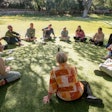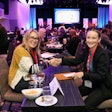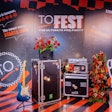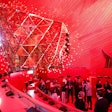
A fancy resort on the beach, extravagant dinners, lots of celebrating and maybe an off-property outing or two. If that’s what comes to mind when you think of an incentive program, you wouldn’t be wrong. But while beach destinations have ranked high on Americans’ vacation destination lists for decades, there’s a quiet shift taking place that’s shaking up the incentive industry, fueled by changing needs and wants from both companies and award winners.
The second Incentive Travel Industry Index—released in fall 2019 as a collaboration among SITE, FICP, Incentive Research Foundation and research partner Oxford Economics—highlighted how “soft power” is boosting the role of incentive travel in corporations. At IMEX, the term sparked great conversation about the “hard power” of incentives (i.e., measurable increased performance, higher revenues) compared with the less tangible (soft), such as building relationships, improving trust and strengthening an employee’s ties to the company.
Christine Erickson, senior vice president of U.S. event solutions for BCD Meetings & Events, says she’s seen this shift for a few years now. “Much like a B2C environment, in our space now we have to look at incentives and understand who the audience is from the very beginning,” she says. “The design of the experience and the destination all tie back to what they’ll connect to, and what will inspire and motivate them to earn the trip.”
For incentive planners, that means spending more time up front honing in on who the potential incentive winners are within a company and what they need to be motivated.
That’s much less about tangible things now and more about the experiential piece of incentives, says Asad Ahmed, senior vice president of global sales at Hyatt Sales Force. People are looking for destinations that are trending, that they haven’t been to before, and that they want to come home and tell people about. “It’s not so much about, ‘I went to Fiji,’ but what you did when you got there,” says Ahmed. Then, the focus shifts to experiences you can create for attendees in a specific destination that are different from what they could get elsewhere.
Modern Luxury
It used to be that if something was very expensive and formal, it was luxurious. You could still say those things are true, says Bob Miller, president and CEO of One10, a Minneapolis-based company specializing in incentives, but there’s been a marked shift. “Now the emphasis is on: Is it well done? Is there a lot of care put into it? Is it hassle-free [for the attendee] and something that’s enjoyable?” he says.
Part of this shift comes from the fact that there is no objective definition of luxury anymore. For example, it is very difficult to say a particular hotel is the best in town because the best venue for one person or group may not be the best for another, says Miller. The definition of luxury is shaped by an individual’s own tastes and preferences.
Another factor is flat budgets. Prior to the coronavirus outbreak, companies were not cutting incentive budgets, but were also not increasing them either, notes Erickson. With an economic downturn now also a factor, incentive planners have to be more creative with what they have to make an experience feel luxurious. “Being able to personalize [an incentive] through customer experience and unique ideas that don’t have a cost associated with them can go a long way in design and delivery of a program,” she adds.
Why It’s Changing
Experiences motivate people differently than money. About a decade ago, Ellen Adelman, a marketing consultant with four decades' experience in the hotel industry, helped put together an advisory board of top incentive experts to get their input on what matters for incentives.
They found that a program was 100% meant to motivate individuals to qualify, based on the fact that if they gave a person a check equal to the cost of the experience, they’d never be able to afford what the company was providing. Similarly, they found individuals wouldn’t take the $10,000, for example, and use it for a trip—they’d use it to pay off debts, put it toward their children’s education and so forth.
This is significant because the ages and profiles of incentive winners have changed over time, as have their motivations for qualifying. “They’re now motivated by what they learned, what they came back with and what they did that they never could do on their own,” says Adelman.
The bar for incentive planning has also been raised because of the wide availability of travel information these days. “It’s more difficult to create a unique experience because we’ve all become our own travel researchers,” says Miller.
With hundreds of travel websites churning out articles on how to travel like a local, plus endless reviews and recommendations from sites like TripAdvisor, people come into an incentive program already equipped with a breadth of knowledge. Take into account the fact that Americans traveled abroad more on their own in 2019. U.S. citizen travel to international regions like South America, Oceania and Africa was up 12.8%, 15.2% and 24.1%, respectively, according to the National Travel and Tourism Office—and it’s easy to see the stakes have been raised.
“This is where it has to be dialed up a bit—not only creating things that are on the obvious bucket list in a destination, but also authentic experiences that help people create memories they will talk about with friends and family,” says Miller.
Bespoke Experiences
So how do you dial up these experiences, exactly? Ahmed says his team at Hyatt focuses on storytelling to help bring destinations to life, asking questions about what kinds of experiences an incentive client wants to give their attendees even before deciding on a location.
Coming up with a theme is a good place to start: culture, history or culinary, for example. Then, Hyatt layers in logistical needs—such as the number of rooms or suites—and provide a list of options to its customer based on the objectives of the program. “We’re trying to do more consultative selling, learning more about the objectives of the program—not just critical logistics, but what you want to achieve,” says Ahmed. He also always asks what a client has done in years past that has resonated with their audience before matching them with potential destinations. “The approach is shifting to, ‘We want to have this experience; where should we go?’” Ahmed adds.
From an individual property perspective, attracting modern incentives is becoming increasingly tied to the uniqueness of its offerings.
Adelman, who works with The Beach Club at Charleston Harbor Resort & Marina in South Carolina, says it comes down to maximizing authentic experiences that can only be had in a particular place. For example, The Beach Club works with Suzanne Pollak, dean and co-founder of Charleston Academy of Domestic Pursuits, to offer highly personalized cooking experiences and interactive classes on Southern entertaining.
“What she’s brought to the table, in a way that only she can, is the culture of the city—the food, the history of the movers and shakers that founded Charleston, and the people themselves,” says Adelman. Lessons learned during one of Pollak’s experiences, such as how to cook oysters or
easy-as-pie appetizers you can make for a dinner party, are ones participants will remember and take home with them.
Aside from the experiential aspect, one of the most compelling selling points of The Beach Club is its size—92 rooms, each with its own fireplace, balcony and water views. “There are not many places where you can own a property during your stay at 70 to 80 rooms,” says Adelman.
Add to that the uniformness of the room offerings—and little touches such as custom monogrammed seersucker robes or old-fashioned saltwater taffy made in Charleston at turndown—and you have an attractive package for incentives. It all comes down to having the right offerings for the right group and being able to provide a bespoke experience in a destination, even one as well-loved (and frequented) as Charleston.
Catering to Individuals
Days of having mandated teambuilding or other activities during an incentive program are gone. “The power of choice definitely is more common than having everyone do the same thing,” says Erickson. Now, incentive planners must design activities that bring unique experiences to a group and immerse them in the community and the destination, while understanding experiences must be localized to the individual attendees as well. Not all attendees are going to want to participate in a CSR activity, for example, no matter how great the cause may be—and, to them, having the ability to opt out adds to the luxury of the experience.
That said, the best-case scenario is when you can design programs that thrill every participant. About a year ago, BCD Meetings & Events planned an incentive for a group that bought out a resort in Bora Bora. They had locals come in and take everyone out on handmade canoes, and drones took photos of the group out on the water. “The response we got from attendees was unbelievable,” says Erickson.
Some companies are also starting to create tiers of incentive programming to recognize winners at various levels, says Ahmed. At the highest level, a winner might get to bring their entire family; in the middle, a plus-one; and at the starting level, the winner only. “Then when they look at those tiers, they will ask us for different levels of delivery,” says Ahmed. “[It impacts] how in-depth the programming is—not just for the winners, but also families and/or partners—to understand some of the company’s core values.”
Corporate Objectives
Designing incentive programs that motivate attendees to want to qualify as well as delivering impactful experiences on the ground, is critical. But ultimately, incentive planners must constantly be thinking about what values and experiences they want their attendees to have as a reward for delivering great results, and also in delivering loyalty. “What all our customers want to do by virtue of incentive programs is [think about] how they make [their company] into a hero at every turn of this experience,” says Ahmed. “It’s not just having a cool experience in a destination; it’s what the company has delivered as part of that ultimate experience.”
Planning even further in advance allows more flexibility in tying in corporate imperatives to the incentive experience, says Erickson. For example, several of BCD Meetings & Events’ clients hosted incentives in Puerto Rico following Hurricane Maria, aligning their companies’ corporate social responsibility stance with a Caribbean destination that motivated attendees to want to attend while also helping to rebuild the island.
The No. 1 Asset
As daunting as it might seem to continually up the ante when planning one-of-a-kind incentive programs tied to company goals that also thrill and motivate attendees, the outlook for incentives is good, says Miller. “As long as people stay focused on the experience they’re trying to deliver—what you want them to think, feel and do as a result of going on that program—it’s an exciting time for the industry.”
The most important thing to remember? People are a company’s most important asset. For all the ways incentive programs have changed over the past few decades, the one constant is that they remain focused on relationship building.
“If you believe talent today is the most important competitive factor for a company, and that trust sits at the center of a positive culture, what better way to build trust and relationships then to go out and have shared experiences?” says Miller. “Whatever an incentive trip offers, it should give people the ideal environment to build relationships.”


















